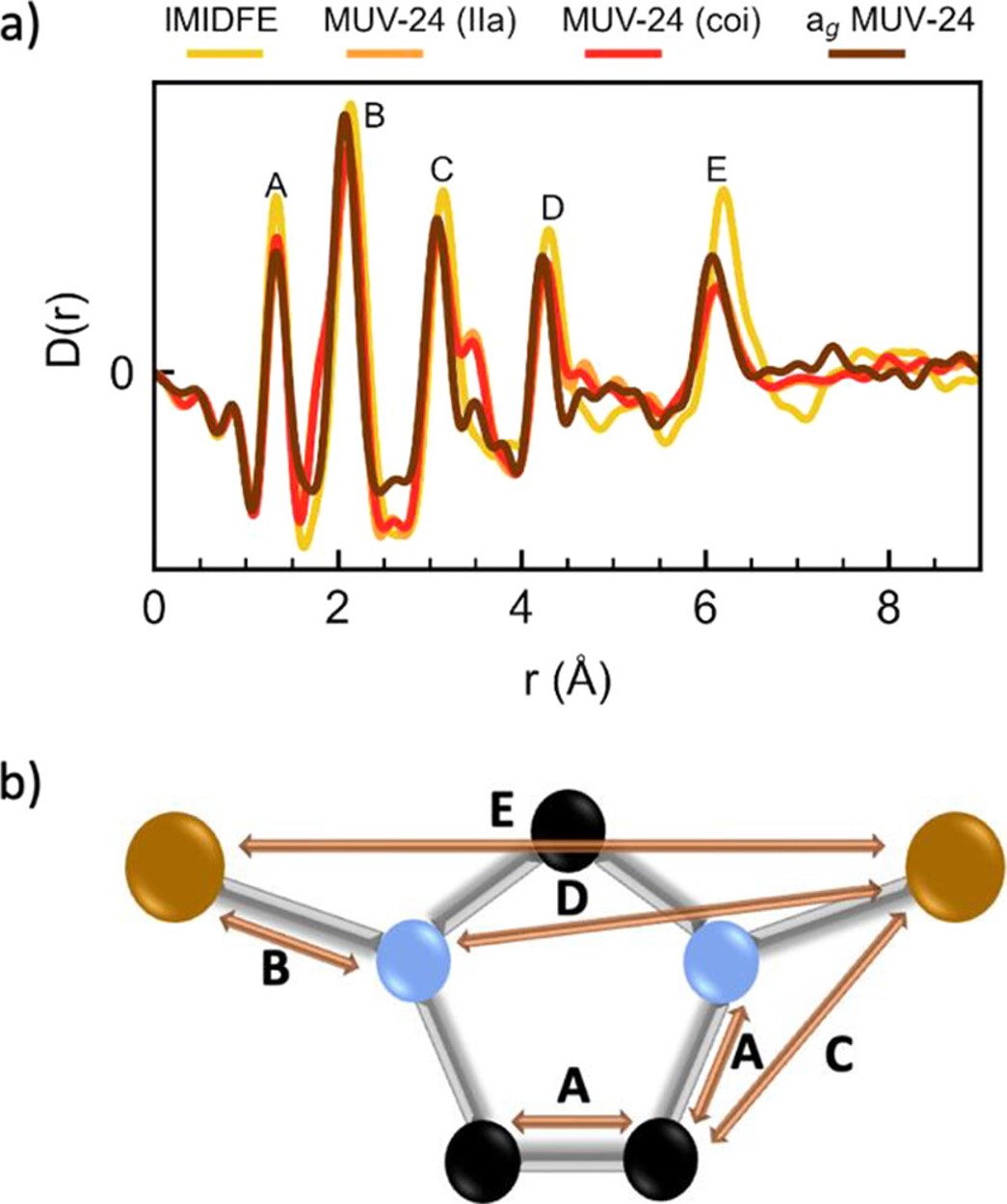Metal-Organic Frameworks (MOFs) are materials built from metal ions linked via organic ions to form large frameworks. They are currently one of the most studied groups of materials because their many varied structures, made by simply changing the inorganic and organic components, allow scientists to design new frameworks with specific and useful properties. For more information on MOFs, read our feature article on porous frameworks.
Although over 100,000 MOFs have already been reported, only a few will melt into a stable liquid; most decompose instead. Recently researchers have discovered that, if suitably cooled, some of these stable MOF liquids will also form glasses. This discovery could lead to advances within the green energy economy with possible applications in battery materials or solar cells.
During 2022, Rasmus Christensen, a PhD student from the University of Aarhus, visited ISIS to work with scientist David Keen for three months as part of his PhD studies. Rasmus' PhD is focussed on studying the structure of materials during synthesis or under operation. In his studies, the pair distribution function (PDF) has been a crucial technique. PDF experiments give information about the distances between atoms within a material. During his visit Rasmus wanted to learn more about PDF methods, especially those pioneered from within the neutron scattering community at ISIS.
 Whilst at ISIS, Rasmus also worked on part of a project led by Guillermo Mínguez Espallargas from Universitat de València in Spain to measure the X-ray PDFs from new iron-based MOF glasses. Rasmus used an in-house X-ray diffractometer at ISIS and developed software to optimise data quality. The PDFs from these MOFs (as seen in the figure on the right) showed that the local atomic distances seen in the corresponding crystalline phases were retained in the glass MOF, confirming that the MOF had not decomposed after heat treatment. Because this was the first report of a MOF glass based on iron, Rasmus' work has featured in an article which has just been published in the Journal of the American Chemical Society.
Whilst at ISIS, Rasmus also worked on part of a project led by Guillermo Mínguez Espallargas from Universitat de València in Spain to measure the X-ray PDFs from new iron-based MOF glasses. Rasmus used an in-house X-ray diffractometer at ISIS and developed software to optimise data quality. The PDFs from these MOFs (as seen in the figure on the right) showed that the local atomic distances seen in the corresponding crystalline phases were retained in the glass MOF, confirming that the MOF had not decomposed after heat treatment. Because this was the first report of a MOF glass based on iron, Rasmus' work has featured in an article which has just been published in the Journal of the American Chemical Society.
"During my visit, I benefitted from learning about pair distribution function methods from the various experts within the ISIS neutron community," explains Rasmus. “I hope to return to ISIS to perform a neutron PDF experiment as part of my thesis work and to build on the collaboration that I have started with David."
“Rasmus brought important expertise to ISIS during his placement," says David. “We are now continuing this partnership, as the PhD student from Universitat de València who made these first iron MOF glasses, Luis León Alcaide, is now visiting ISIS to further this important work."
Figure, right, shows the X-ray PDF data collected by Rasmus in the form of D(r) of IMIDFE, MUV-24(lla), MUV-24(coi), and ag-MUV-24 (a). (b) Structural representation of the short-range order matching bonds and pair distances with the peaks shown in a. Fe, C, and N atoms are shown in brown, black, and blue, respectively.
Further information
The full paper can be found at DOI: 10.1021/jacs.3c01455
